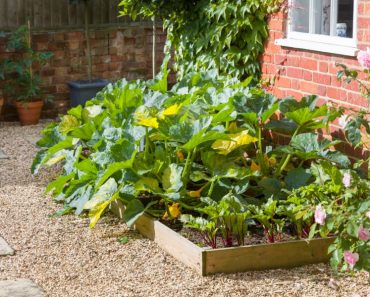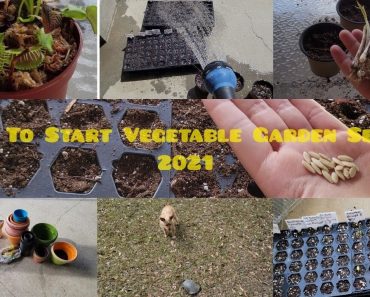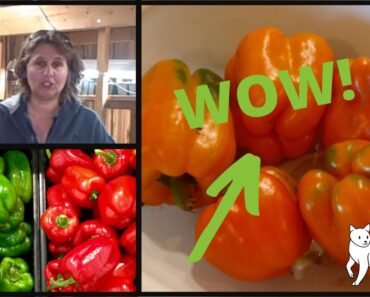Let’s face facts, survival food is expensive, and regardless of the name brands you want to purchase, survival food still remains a pricey option. If you want to confirm these facts, just look at MREs, and you will understand that stocking up on survival food is a challenge for most folks.
So rather than spending all your money on survival food, how about checking out the local grocery store for long-term foods that won’t cost you an arm and a leg. You will find there a vast selection of shelf-stable foods that are suitable for your pantry. Let’s look at the food options available at your grocery store.
Rice and beans
For the survivalist, these are the staples regardless of the scenario he or she is prepping for. In fact, rice and beans have been part of survival diets going back decades. They are cheap and filling, and when you combine them, you will obtain a maxed-out protein meal that will provide your body with all the needed amino acids.
For preppers, pinto and kidney beans are the recommended choices since they are packed with nutrients. It’s advised to store a variety of beans to avoid food/appetite fatigue settling in too soon. Keep in mind that beans will harden over time, and softening them will require a good amount of water. Store your beans in plastic containers with oxygen absorbers, and you will extend their shelf-life. They should last a decade or two without problems.
When it comes to rice, there are quite a few varieties to choose from, so it’s better to know the difference besides the color of rice. For example, white rice is processed to have the outer husk and bran removed, to obtain that polished white grain. On the other hand, brown rice isn’t as processed, and it still has those layers. In general, white rice is the most common option for preppers, and it will store longer than other varieties. Rice with the bran layer will go rancid over time since the bran contains small amounts of oil. The shelf life of white rice is about 30 years if stored properly, and for brown rice, the shelf life is about 12 months or more if stored in the freezer.
Pasta and sauce
Pasta is another preferred long-term food option since it can last for a long time and it can be easily cooked. Toss some fusilli into a pot of boiling water, let them boil for up to 10 minutes, and that’s pretty much all the cooking it needs. Heat up some pasta sauce, and you have a tasty meal waiting for you.
Pasta comes in all sizes and shapes, and even if the ingredients may be the same, the diversity in size and shape will provide you with a “different” meal every time you cook it. The same goes for jarred sauce, and there are various types of sauce you can choose to go with the pasta. These two options are cheap and will fill your belly in no time.
Another option worth mentioning is canned pasta with meatballs or pieces of hot dogs. While the shelf life may not be as long as the one of dry pasta, these options are quite nutritious, and they provide a hot meal, which we all know can be a morale booster in a stressful scenario.
Soups and stews
These two options can provide a fulfilling meal without too much effort. For example, a can of chicken soup is a great choice to add vegetables, meat, and starches to your meal. Get some hardtacks, and you’ve got a nutritious meal on the cheap. Canned chili and stew do not require cooking (although heating does improve the taste considerably), and they can be eaten cold on the go. To make a nutritious meal, you can boil a cup or two of rice, put a can of chili over the cooked rice, and that’s it.
Do not forget to purchase some dry soup mixes since these have a longer shelf life than canned soups. If you do so, make sure you have plenty of clean water to make the soup.
Earn Your Food Independence NOW
Instant mashed potatoes
I have various instant potato mixes in my pantry, and I’ve picked varieties that do not require butter or milk. I just add hot water and stir, and that’s all there is to it. One pouch is enough for two people, and you can also be creative with these mixes. For example, in case needed, you can add the potato mix to soups as a thickener.
Spam and other meats
If you are a serious prepper, you should already have a few cans of Spam in your pantry. In fact, I hardly know any preppers that don’t have this food in their stockpile. It has been around since the 40s, and without a doubt, the best way to cook it is by cutting it into thick slices and throwing them in the frying pan. However, Spam is not the only option available for preppers and survivalists, and there are plenty of other variations and recipes of the same sort of product. For example, I also buy canned ham and cook it the same way.
Tuna is another canned meat that is relatively inexpensive, and the oil-packed varieties are a better choice for the survival pantry rather than the tuna packed in water. Not only it has a longer shelf life, but the oil provides fat to your diet, and you can also use it for cooking.
Another option is canned chicken since it can be eaten right out of the can, but it can also be used in soups and other dishes. Other options you might want to consider are roast beef, corned beef, shredded pork, and potted meat. If you store canned meats properly in a cool and dry place, they will last up to five years.
Fruits and vegetables
These are required for every survival diet because they will provide your body with much-needed vitamins and other valuable nutrients. Besides being nutritious, fruits and veggies also provide variety in your diet, and as mentioned before, diversity is the key to preventing appetite fatigue. I particularly enjoy canned pineapple and peaches since their sweetness makes them valuable treats. Regardless of what canned items you pick, make sure to use water from the cans as well. For example, the water from canned fruits can be used as is to make tasty beverages, while the liquid from canned veggies can be used for cooking.
Regarding shelf life, if you pick citrus fruits, you should know that these have a shorter expiration date due to their high acidity, but even so, they should last for one year or more without problems. Here, it is also worth mentioning dehydrated foods since these will help you get your fruits and veggies fix, but they will also deplete your water supply. These are not cheap but will last for a very long time. And how about getting some jars of jams and jellies? A little bit of this tasty sweet paste on a hardtack will become a valuable treat.
Cooking oil
Cooking oil is a highly recommended option for your pantry because it will provide your body with fats, and it can also help you cook a variety of meals and improvise with various ingredients. For the survival pantry, it’s recommended to stick with vegetable and canola oil since these are the most affordable options. Olive oil is the preferred option if you can afford it since it’s much healthier and can flavor even the dullest meal you can think of. If you prefer to store lard or other animal fats, keep in mind that they will go rancid faster than commercial oil.
Baking mixes and staples
When picking baking mixes, I often go with the varieties that have the “just-add-water” label. I can use these to make dumplings, pancakes, biscuits, and much more. These baking mixes will last for one year without issues if stored properly. Also, the trick to make the most of it is that if you open a package and you don’t use the entire content, store the mix in an airtight container or a sealable plastic bag.
If you have any baking skills, you could make many meals with flour, salt, and various baking essentials. These are inexpensive and store extremely well. Salt and sugar are extremely versatile and valuable.
Spices and condiments
A lot of people overlook spices and condiments when they make their food-prepping plan. They believe that storing salt and pepper would be more than enough for their cooking needs. However, there are many spices and other condiments that can enhance the taste of your food. In my case, I can’t even imagine what I would do without garlic powder and chili flakes. My advice is to store the ones you are using on a daily basis and experiment with others as well in your day-to-day cooking to discover what else would need to be stored.
Some will decide to store barbeque and hot sauce as well, and that’s not a bad idea at all. These can last a year or more if sealed and stored properly. Some will also get some gravy mixes and soy sauce, and it really depends on what you like to eat and how well you know to use these ingredients. One thing is certain, condiments and spices will make even the worst food you can imagine edible.
A final advice
One way to establish what long-term foods to buy from your grocery store would be to make meal plans for your family for two or three weeks. Plan every meal on paper, and you can even include snacks. It’s recommended to stick with the foods your family eats, and you should concentrate on the food items that are shelf-stable. If you do so, you will account for every ingredient, and you will be able to calculate the quantities for each ingredient depending on your meal plans. After 2-3 weeks, change the meal plan and do so for a while to make sure you include diversity in your food-prepping plan.



























